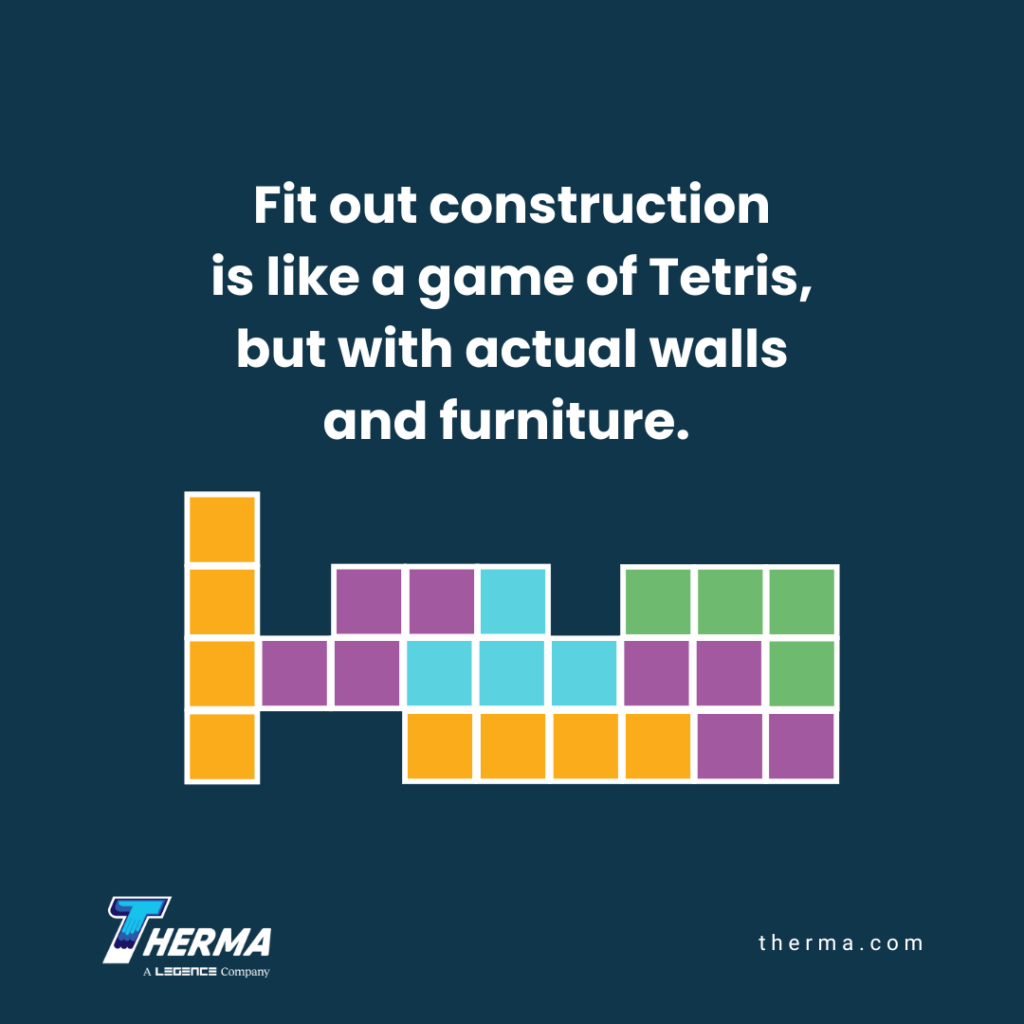by Patti Dees
Fit out construction prepares a leased space for occupation. While the design and installation are optimized for the tenant’s use, the construction process can benefit landlords as well.
What is Fit Out Construction?
Fit-out construction, also called tenant fit out, is generally defined as interior construction in an existing building to meet the needs of a new tenant. The scope of the work can include a range of modifications, from architectural elements, and changes to HVAC or electrical systems, to installing specialized equipment or furniture.
However, tenant fit out is not the same as interior design. Interior design focuses on décor. Fit out construction focuses on layouts for functionality, productivity, and efficiency so that the tenant can optimize their business.
Benefits of Fit Out Construction
The benefits for the tenant are important. Fit out construction does more than make a space usable. The building process aims to ready the specific space for occupation by a specific tenant. Well-designed layouts consider how the space is expected to be used. While there may be similarities between tenants within the same industry, each business will have its own needs and preferences. This could be reflected in how partitions are laid out or through detailed specifications for equipment.
Given that the project is specifically tailored to the tenant’s needs, it is easy to assume that there is little benefit for the landlord. However, fit out construction can attract – and keep – tenants in a building. Fit outs can also help structural elements or building systems stay current, making the building more attractive to future tenants.
 What Is the Cost
What Is the Cost
According to the Americas Office Fit Out Cost Guide 2023 from Cushman and Wakefield, the average cost of an office fit out is $146/sf for the first tenant. Electrical systems account for the largest portion of the initial fit out at 20% or more of the cost. A close second in cost is the mechanical and plumbing category at 18%. Subsequent tenants who reuse portions of the existing setup can spend an average of 10-15% less.
However, the actual cost of the construction depends on several factors. Labor, permits, and material costs vary by region. This is further impacted by deadlines and the logistics for getting the materials in place. The quality of materials to be used, any efficiency or sustainability requirements, and funds set aside for unexpected expenses also factor into the overall cost of construction.
Probably the most important factor, however, is the type of business or space undergoing construction. The Cushman and Wakefield guide focused on office fit out designs. For other types of business environments, the costs will change. This is especially true for tenants that require specialized equipment, such as commercial kitchens or medical equipment, or more complex HVAC and electrical systems.
… And Who Pays?
Since both the tenant and the landlord are stakeholders in the fit out construction process, financial details need to be negotiated prior to any work being started. Some landlords will help offset costs by providing steep discounts on rent during the construction phase or shouldering specific costs for improvements that increase the attractiveness of the space for future tenants.
Even if the tenant is covering most or all of the costs themselves, terms, deadlines, and restrictions should be included within the leasing contract. To protect the value of the property, landlords can include details on code compliance, expectations for the quality of the work, limits to protect neighboring tenants, and consequences for not meeting deadlines. Tenants can include negotiated leasing terms to safeguard their investment in the space.
Preparing a space for success helps the tenant’s profitability and the value of the property for the landlord. Experienced contractors provide a smooth construction process from design through installation. Whether landlord or tenant, Therma’s professionals are available to help with design, installation, and equipment service.
Patti draws on her background as a chemical engineer to share information with readers on technology, manufacturing, and construction.
Sources
Buildrite Construction – Defining Commercial Fit Out Construction
Cushman and Wakefield – Office Fit Out Cost Guide
Henick-Lane – Planning Tips for a Successful Tenant Fit-Out







